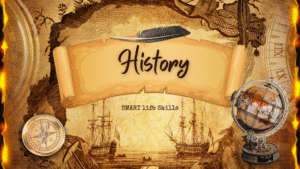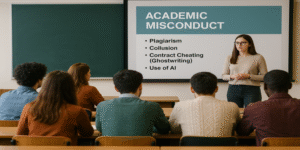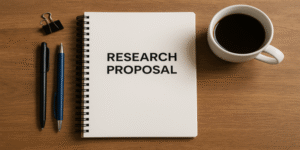In an ever-evolving world shaped by globalisation, rapid technological advancement, and economic volatility, adaptability and flexibility have emerged as indispensable traits in both personal and professional settings. The modern workplace demands individuals who can swiftly respond to change, embrace innovation, and navigate uncertainty with confidence. But what exactly makes a person adaptable or flexible? This article explores the psychological, behavioural, and cognitive attributes that underpin adaptability, the ways in which these skills manifest, and how they can be developed.
1.0 Intellectual Flexibility
At the heart of adaptability lies intellectual flexibility, which refers to the ability to consider alternative viewpoints, integrate new information, and transition between micro-level details and macro-level perspectives. According to LePine et al. (2000), cognitive adaptability is the capacity to alter one’s thought processes to effectively respond to dynamic situations. Individuals who demonstrate intellectual flexibility are capable of reassessing their assumptions, shifting strategies when needed, and embracing continuous learning.
For example, during the COVID-19 pandemic, professionals in various sectors had to adapt to remote working, often acquiring new digital skills on short notice. This transition required not only technical adaptability but also a mindset open to change (Kniffin et al., 2021).
2.0 Receptiveness to Change
Being receptive means showing a willingness to engage with change and view it as an opportunity rather than a threat. This attribute is particularly relevant in organisations undergoing transformation. Research by Judge and Bono (2001) highlights that openness to experience, one of the Big Five personality traits, is significantly correlated with adaptability.
Recruiters often seek candidates who embrace rather than resist change, particularly in volatile industries like technology or healthcare. For instance, a nurse who is open to adopting a new electronic health record system, even if unfamiliar, shows receptiveness that directly supports improved patient care (Weiner, 2009).
Moreover, receptiveness includes emotional regulation, where one’s positive attitude enables resilience in the face of uncertainty. The ability to remain optimistic, even when outcomes are unpredictable, sets apart highly adaptable individuals from their peers.
3.0 Creativity and Innovation
Adaptable individuals are often creative thinkers, capable of generating new solutions under pressure. Creativity, in this context, does not merely imply artistic expression but the application of novel approaches to problem-solving. Torrance (1974) defined creativity as “the process of sensing problems, making guesses, formulating hypotheses, and communicating results.”
For example, during budget cuts, a school teacher who devises low-cost learning aids from everyday materials exemplifies creativity in action. Such flexibility in thinking allows organisations to remain competitive and agile (Amabile & Kramer, 2011).
Importantly, creativity also involves a willingness to experiment and a tolerance for failure, recognising that innovation often stems from trial and error.
4.0 Modification of Behaviour
Behavioural flexibility refers to the ability to adjust one’s actions or communication style based on the demands of a situation. According to Pulakos et al. (2000), adaptable behaviour involves altering strategies and interpersonal approaches in response to external cues.
A classic example is a manager who shifts from a directive leadership style to a coaching one when dealing with a younger, more independent team. This ability to modify one’s behaviour enhances both personal effectiveness and team cohesion.
Behavioural flexibility is also crucial in cross-cultural contexts, where cultural intelligence enables individuals to navigate diverse norms and values effectively (Ang et al., 2007).
5.0 Learning from Experience
Contrary to popular belief, adaptability is not an innate trait exclusive to certain personalities. Many people learn adaptability through exposure to diverse situations, setbacks, and deliberate practice. According to Kolb’s (1984) Experiential Learning Theory, individuals develop new ways of thinking and acting by reflecting on experiences and applying insights to new contexts.
A student who initially struggles with group work but learns to collaborate more effectively over time is demonstrating adaptive growth. The key lies in recognising areas for improvement and taking proactive steps to develop.
Recruiters often value candidates who can articulate how past challenges helped shape their approach to change, demonstrating a growth mindset (Dweck, 2006).
6.0 Workplace Examples of Adaptability
In recruitment contexts, adaptability is assessed through behavioural interview questions such as:
- “Tell me about a time you had to learn a new skill quickly.”
- “Describe a situation where you had to change your approach to meet new demands.”
Responses that show an individual has:
- Shifted priorities in response to organisational changes
- Suggested improvements to existing processes
- Maintained a positive outlook despite setbacks
—are all indicative of high adaptability.
A relevant case is Netflix’s transformation from DVD rentals to streaming. Employees had to embrace new business models, upskill rapidly, and rethink success metrics. Those who adapted thrived; those who clung to the old ways often struggled (Hastings & Meyer, 2020).
7.0 Building Adaptability
Adaptability is not static; it can be cultivated through intentional effort. Some practical strategies include:
- Seeking feedback regularly to improve
- Practising mindfulness to enhance emotional regulation
- Engaging in diverse roles or tasks to build versatility
- Staying informed about trends and new technologies
Training programmes that include scenario-based learning, role-play, and change simulations have also proven effective in enhancing adaptability skills (Goldstein & Ford, 2002).
Adaptability and flexibility are multifaceted competencies involving cognitive agility, emotional receptiveness, creative problem-solving, and behavioural fluidity. In an unpredictable world, these traits are essential not only for personal success but also for organisational resilience.
While some individuals may naturally gravitate towards change, everyone can develop adaptability through reflection, learning, and purposeful effort. Employers increasingly seek such individuals—those who say “yes” to challenges, bounce back from setbacks, and remain open to evolving landscapes.
References
Amabile, T.M. & Kramer, S.J. (2011). The Progress Principle: Using Small Wins to Ignite Joy, Engagement, and Creativity at Work. Boston: Harvard Business Review Press.
Ang, S., Van Dyne, L. & Koh, C. (2007). Cultural intelligence: Its measurement and effects on cultural judgment and decision making, cultural adaptation and task performance. Management and Organization Review, 3(3), pp.335-371.
Dweck, C.S. (2006). Mindset: The New Psychology of Success. New York: Random House.
Goldstein, I.L. & Ford, J.K. (2002). Training in Organizations: Needs Assessment, Development, and Evaluation. Belmont: Wadsworth.
Hastings, R. & Meyer, E. (2020). No Rules Rules: Netflix and the Culture of Reinvention. London: Virgin Books.
Judge, T.A. & Bono, J.E. (2001). Relationship of core self-evaluations traits – self-esteem, generalised self-efficacy, locus of control, and emotional stability – with job satisfaction and job performance: A meta-analysis. Journal of Applied Psychology, 86(1), pp.80–92.
Kniffin, K.M. et al. (2021). COVID-19 and the Workplace: Implications, Issues, and Insights for Future Research and Action. American Psychologist, 76(1), pp.63–77.
Kolb, D.A. (1984). Experiential Learning: Experience as the Source of Learning and Development. Englewood Cliffs: Prentice Hall.
LePine, J.A., Colquitt, J.A. & Erez, A. (2000). Adaptability to changing task contexts: Effects of general cognitive ability, conscientiousness, and openness to experience. Personnel Psychology, 53(3), pp.563-593.
Pulakos, E.D., Arad, S., Donovan, M.A. & Plamondon, K.E. (2000). Adaptability in the workplace: Development of a taxonomy of adaptive performance. Journal of Applied Psychology, 85(4), pp.612-624.
Torrance, E.P. (1974). Torrance Tests of Creative Thinking: Norms-technical Manual. Lexington: Personnel Press.
Weiner, B.J. (2009). A theory of organizational readiness for change. Implementation Science, 4(1), pp.1-9.









